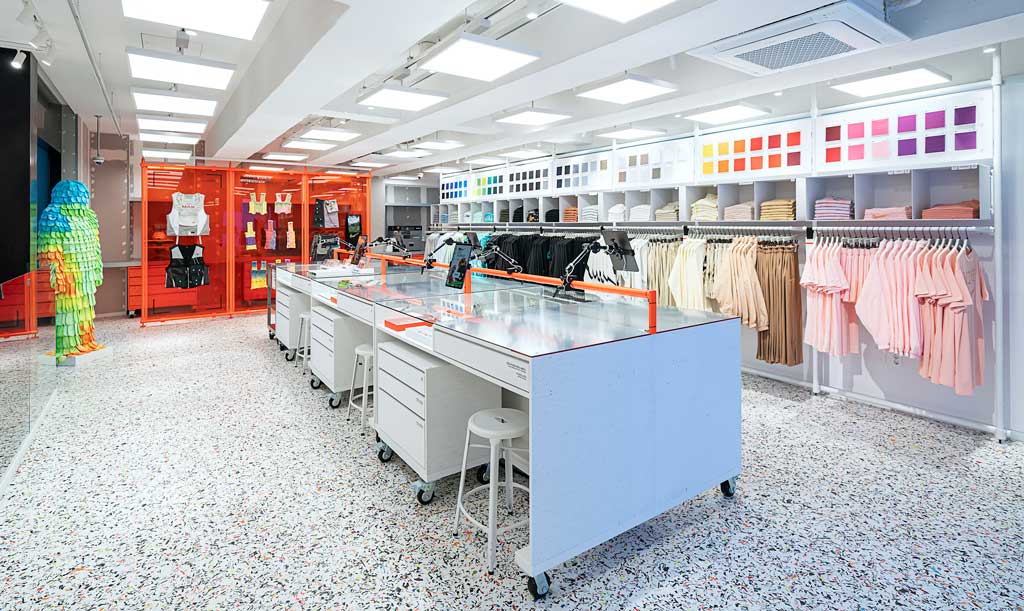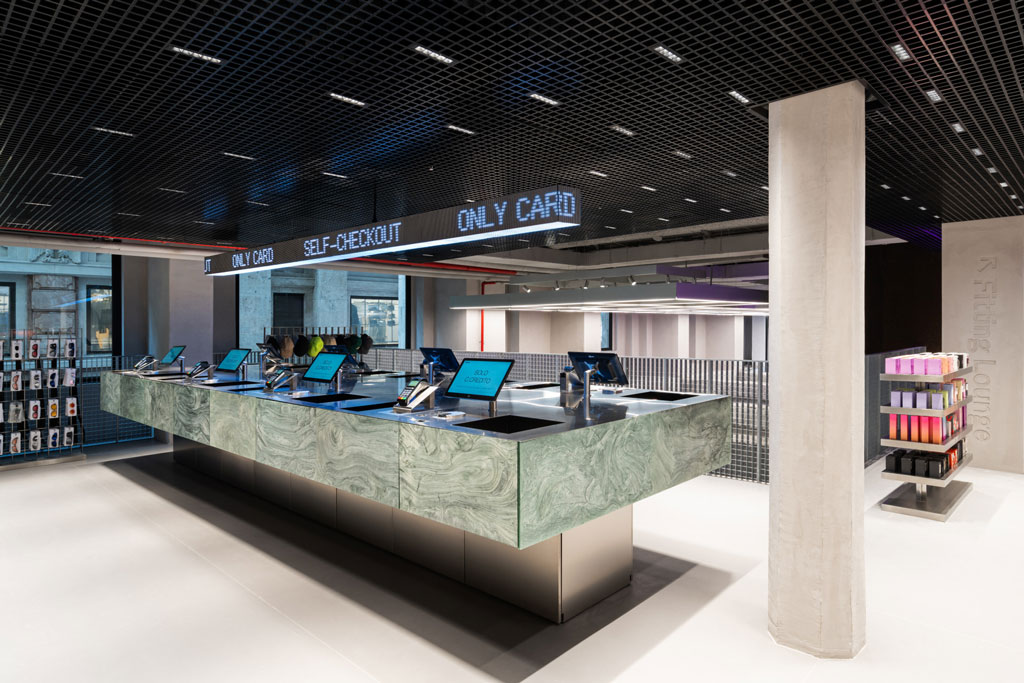Brand: Rixo
Location: London
Design: Cupla
Photographer: Megan Taylor
About: The Rixo flagship store includes a coffee station, cocktail bar and an alteration service to service its bridal and preloved rental offering.
In an increasingly digital world, the future of retail may seem uncertain for physical stores. E-commerce has undeniably changed the way we shop, offering convenience, a vast selection, and the ability to shop from the comfort of our homes. However, it’s crucial to recognise that physical retail environments still hold a unique and valuable place in the retail landscape. They have the power to build brand trust, foster loyalty, and create vibrant brand communities or tribes.
In this article, we’ll explore how physical stores can not only survive but thrive in this new world by shifting their focus from sales at the till to creating engaging, immersive, and experience-driven environments.
Building Brand Trust and Loyalty
One of the fundamental strengths of physical stores is their ability to build brand trust and loyalty in a way that online platforms often struggle to replicate. When customers can see, touch, and interact with products in person, it adds a tangible element to the shopping experience. Shoppers can assess the quality, fit, and feel of items, ultimately strengthening their trust in the brand’s offerings. There is also the opportunity to ask questions and interact with knowledgeable staff members, a service that’s difficult to replicate online, or even get individual viewings of items such as jewellery.
Furthermore, physical stores can create a sense of community and belonging, fostering what is often referred to as a “brand community” or “brand tribe.” These communities are formed when customers share a common bond with a brand, often facilitated through in-store events, workshops, or simply a welcoming and engaging atmosphere. Such communities not only boost customer loyalty but also generate word-of-mouth marketing, turning satisfied customers into brand advocates.

Brand: Nike
Location: Seoul
Design: Nike
About: Allowing customers to connect with their products commercially as well as creatively. By hosting community led events and workshops it instills a sense of brand loyalty that goes deeper than its products.
The Mind Shift: Redefining Retail Success
The Showroom Concept: The Future of Retail
The “showroom” concept is gaining traction as a forward-thinking approach to physical retail. Rather than carrying large inventories, these stores focus on showcasing products and providing immersive experiences. Customers can explore, try out, and learn about products, which can then be conveniently purchased online. This concept recognises the inherent limitations of trying to compete with e-commerce giants like Amazon solely based on inventory size and pricing.
Amazon’s foray into physical stores is a testament to the importance of physical retail in the customer-brand relationship. Even online giants recognise that building lasting customer engagement and relationships is challenging through online channels alone.
Modernisation and Listening to Customer Needs
Some retail brands have faltered on the high street because they failed to modernise and listen to their customers’ evolving needs. Retailers that remain stuck in the past, offering uninspiring shopping experiences and neglecting the integration of technology, are more likely to struggle. The world of online retail is only going to increase so it’s up to brands to embrace the change and unify their physical and online presence.

Brand: Bershka
Location: Milan
Design: OMA/AMO
Photographer: Marco Cappalletti
About: The recently opened Bershka flagship store in Milan has thoughtfully allowed for an independent online returns desk as well as click and collect desks meaning those processes are kept separate from standard transactions inevitably reducing customer tension.

Brand: Sixty-Six
Location: Shenzhen, China
Design: Moc Design Office
Photographer: Nie Xiaocong
About: Creating brand loyalty through experience by installing a community hang out space centered around the brand and that puts connection first and product offering second.
Experience-Driven Retail: The Key to Survival
To not only survive but thrive in the new world of retail, physical stores need to be experience-driven. They must create a genuine desire for customers to visit and engage. This can be achieved through various means:
Interactive Product Displays: Allow customers to interact with products, whether it’s trying on clothing, testing gadgets, or sampling products.
Personalised Services: Offer personalised shopping assistance, recommendations, and fitting services to enhance the customer experience.
Immersive Environments: Create captivating store designs and atmospheres that tell a brand’s story and immerse customers in its culture, such as we did for The Chocolate Shop.
Events and Workshops: Host events, workshops, and classes related to your product or industry to bring customers together and build a sense of community.
Digital Integration: Leverage technology like augmented reality, virtual reality, or interactive kiosks to enhance the shopping experience.
Incorporate Hospitality: Include a bar or coffee station and have the chance to attract a broader audience and encourage engagement. Increase footfall and shift away from the hard sell with the opportunity to increase passive sales.
Final thoughts
Since 2022, Matt has enjoyed completing countless projects for independent brands across the UK with Copper and Ash.
- The Power of Interior Design in Creating Restaurant Ambience - July 24, 2025
- 5 Restaurant Design Trends to Look Out For in 2025 - May 9, 2025
- Introducing Our Newest Designer- Chloe Patrick - April 24, 2025

